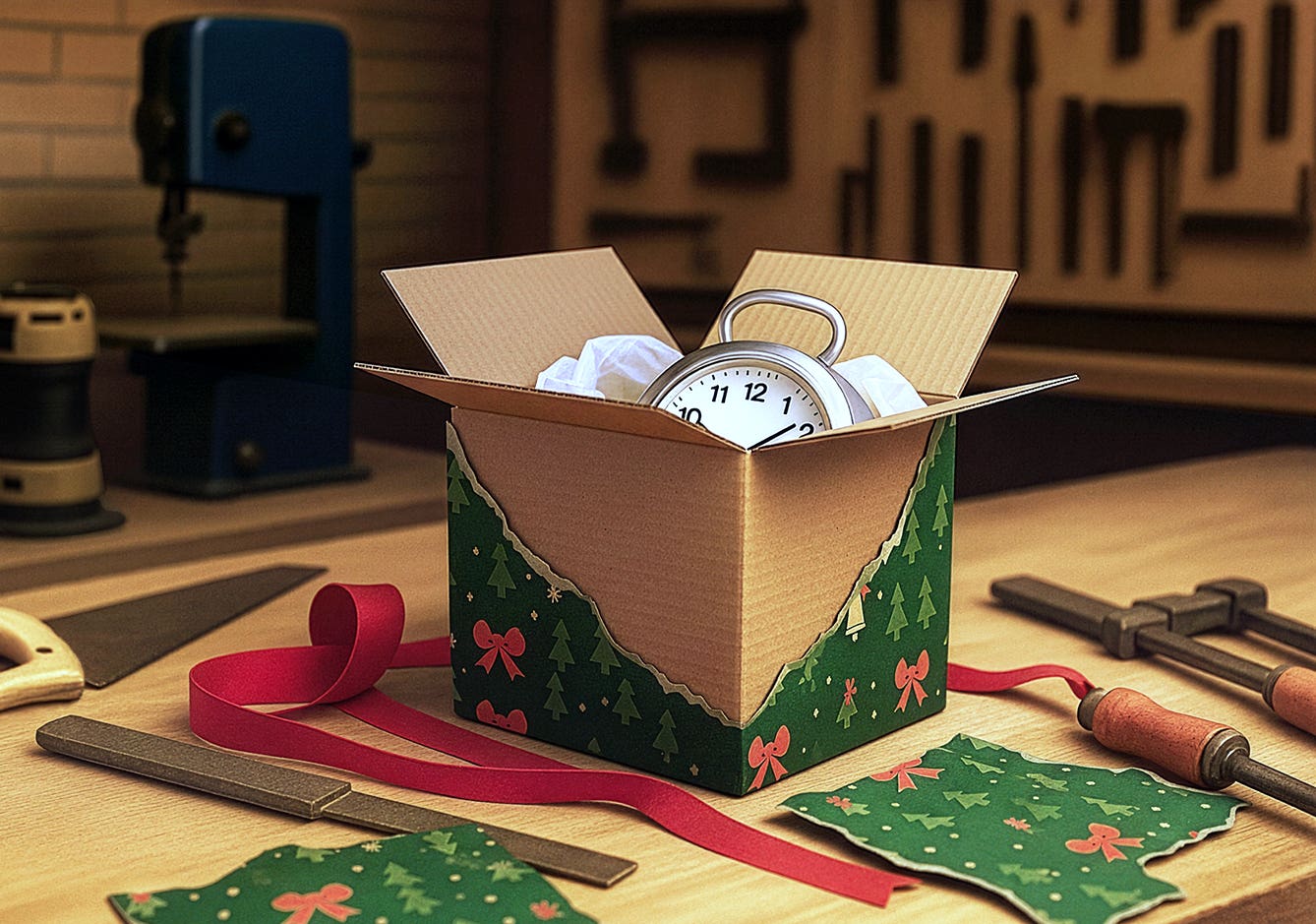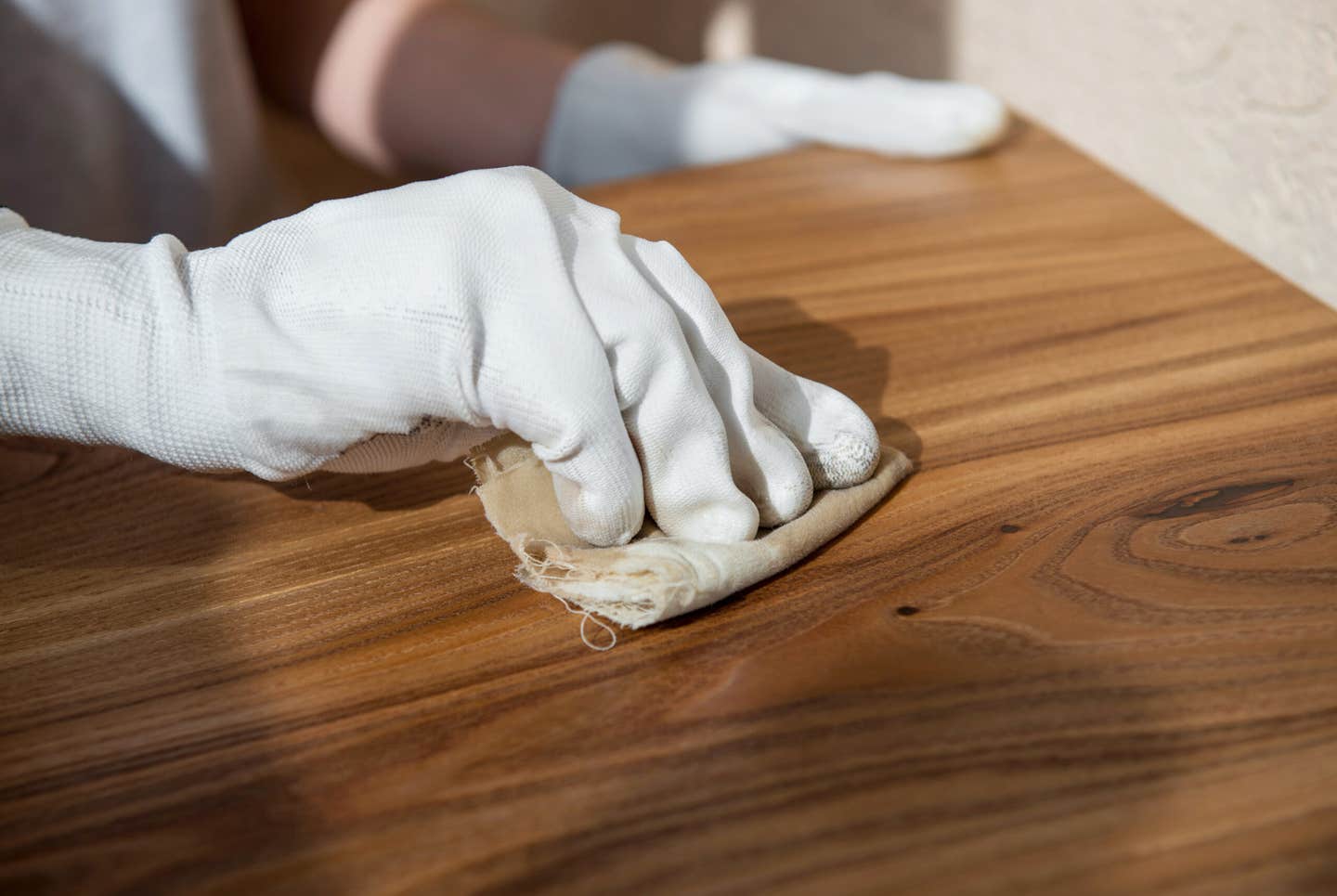Shellacs value stands the test of time
This all-natural resin that is a renewable resource dries to the touch in minutes and can be sanded or recoated rapidly {loadposition position10} Shellac has been around a long, long…
This all-natural resin that is a renewable resource dries to the touch in minutes and can be sanded or recoated rapidly
{loadposition position10}
Shellac has been around a long, long time as a coating and its popularity has waxed and waned through the years because of changes in style and taste and the development of many modern coatings that seem to have an advantage over shellac.
But shellac just doesn't go away. Aside from the notion of authenticity, period coating, and originality, a well-done shellac finish can be beautiful and durable, as well as easily repairable. Because it has been used as a coating for so long, we've discovered or invented lots of tricks and shortcuts and a number of simple rules that make using shellac easy and pleasurable.
What is shellac?
Shellac is a resin produced by one of a number of insects that feed on the sap of certain trees and cocoon their larvae, themselves and the twigs and limbs they are on in the resin they exude. This resin is harvested and processed in several different ways, the desired effect being to produce a dry, solid form of the resin, cleaned and purified to different degrees and eventually sold in powder, granule, flake or liquid form. The dry shellac resin is made ready for use by dissolving it in one or more of several alcohols and further cleaning it by straining. The resultant liquid is an evaporative coating - it dries by evaporation of the solvent, leaving a film of the solid material. Since alcohols are fast-evaporating solvents at room temperature, the film will dry to a solid state very quickly. Since the film is not further curing by cross linking, as a varnish does, it can be easily dissolved in its original solvent or a similar one.
Shellac contains several chemical components, including coloring agents, wax and two resins - one harder and one softer. Various grades of shellac are available, differing in color and wax content, optical properties, hardness and moisture resistance. These differences are attributable to the degree of processing as well as the location and time of their harvest, the particular specie of insect and the tree on which it has fed and grown. Very light-colored, blond or bleached shellac is made so by treatment with alkali and chlorine and has a very limited shelf life.
Shellac as a coating was used primarily from the early or mid-1800s until into the 1930s, when cellulose nitrate (or nitrocellulose) coatings started becoming popular.
Why use shellac?
In today's environment where "green" (not the color, but the idea) is highly prized, shellac is an all-natural resin of insect origin that is harvested regularly and is therefore a renewable resource. Its solvent, alcohol, is produced by fermentation of another renewable resource - primarily a variety of grains - and has neither an unpleasant nor persistent odor. Because of the rapid evaporation of the alcohol, a coat of shellac dries to the touch in minutes and can be sanded or recoated rapidly. In application it is not as temperature-sensitive as most other finishes and can be applied at 40 degrees F and above.
Highly purified shellac is used as a protective glaze for foods, candy and pharmaceuticals and is approved by the FDA for those uses. Unlike oil-based finishes, and other coatings, shellac is UV-resistant and will not change color with age. This lack of toxicity makes it ideal for children's furniture or toys.
For the general woodworker or finisher, shellac is the go-to problem solver. It functions as a barrier coat to odors such as smoke and urine, for example. The optical properties of shellac can "pop" or enhance the wood grain and depth, prior to coating with other film-forming finishes, bringing out the warmth and richness of the wood and allowing a "close to the wood finish" without the disadvantages of an oil finish.
Shellac has outstanding mechanical adhesion to many surfaces, including existing finishes, and most finishes adhere well to shellac, adding to its prowess as a problem solver. As a "tie coat" it adheres well to the sub coat and other coatings, in turn, adhere well to it.
Because it is truly an evaporative coating that undergoes very slow chemical change as it ages, it can be easily touched up with more shellac, which will form a solvent bond with the original, blending in easily. Because it can be dissolved by alkalis like household ammonia and by various alcohols, it is fairly easy to remove from brushes and tools.
Shellac is commonly believed to have little moisture resistance. However, it outperforms Tung, Danish and linseed oil coatings by quite a bit. It is not resistant to water sitting on the surface, but is easily repairable. Dewaxed shellac, while affording greater clarity, is less moisture-resistant than waxed.
Storage and preparation
Shellac can be purchased dissolved and ready to use. But as "pre-mixed" shellac ages, it undergoes a chemical change called esterification. The most noticeable effect is that the shellac does not dry as quickly and hard as when new. Some new formulations, such as Zinsser SealCoat, have a much longer shelf life.
Mixing shellac by dissolving the dry form is generally safer. The dry shellac, stored properly in a cool dry place, has a very long shelf life and can be easily prepared when needed. The liquefied shellac can then be stored for weeks to months, depending on conditions (cooler and drier is better).
The usual solvent for shellac is denatured alcohol, which is ethanol, the type of alcohol that is in liquor, mixed with another substance called a denaturant to make it undrinkable and consequently not subject to an alcohol tax. Some are specially formulated to work better than others as a "shellac reducer," and may be labeled as such. The purity of the alcohol plays a part in the performance of the shellac. Alcohol readily absorbs moisture from the air, so don't leave the container of shellac or reducer open longer than necessary.
The amount of shellac, by weight, mixed into an amount of alcohol, by volume, determines the solids content and, to an extent, the viscosity of the mixed shellac. That proportion, called "cut," is the weight in pounds of shellac dissolved into a gallon of alcohol. For most uses, a 1 to 3 lb. cut is sufficient. A lower cut will flow more easily off the brush, dry faster and penetrate the wood more readily, while a heavier cut will provide a thicker coating with each application.
A quicker mix
Most directions tell you to mix the flakes with the solvent and agitate it frequently until all the flakes have dissolved. This can take from hours to days, depending on agitation, temperature and the amount of shellac being dissolved.
There's an easier way. First, since the area of the shellac relative to its volume is a determinant of the time it will take to dissolve, I like to pulverize the flakes. I find a $2 blender from a garage sale works quite well, yielding particle sizes from tiny granules to dust. For very small amounts, a high-speed coffee grinder also works quite well.
Warming the solvent will also speed the process. But because the alcohol is flammable, use a heat source that won't ignite the fumes, such as a double boiler or slow cooker. Keep the container loosely capped to avoid both loss of solvent and pressure buildup. If you have the ability to gently agitate the mixture, you can have usable shellac in minutes. Strain through a fine mesh strainer or loose weave cloth to remove any undissolved shellac or debris.
The dry shellac will soften significantly at around 150 degrees F, and the powder, granules or flake form you generally purchase will "block" or stick together at a somewhat lower temperature. This is normal and expected if the shellac is stored in moist and warm conditions, such as on a high self in a shop with a metal roof and little insulation. The user can easily wrap the blocked shellac in a cloth and crush it with a hammer. When the larger pieces are run through the blender you have an easily soluble mix of powder and tiny granules.
Shellac can be applied by almost any method: brush, rag, spray, padding or roller. It is very fast drying, so when brushing, ragging or rolling, work with a wet applicator and avoid overworking the liquid as you are applying. Often you will have to wait until a coat is dry to recoat a skipped area. While the odor of the alcohol is not unpleasant, and even quite attractive to some finishers, ventilation should be sufficient to avoid becoming intoxicated.
Synthetic brushes, such as those used for water colors, typically last longer, are easier to care for than natural bristle and, if of good quality, produce good quality work. Two-inch and smaller brushes offer good control.
Greg Williams, formerly senior touch-up and finishing instructor for Mohawk Finishing Products, is now a freelance instructor and consultant for finishing and touch-up. He can be reached at gregalwil@yahoo.com.
This article originally appeared in the February 2010 issue.







